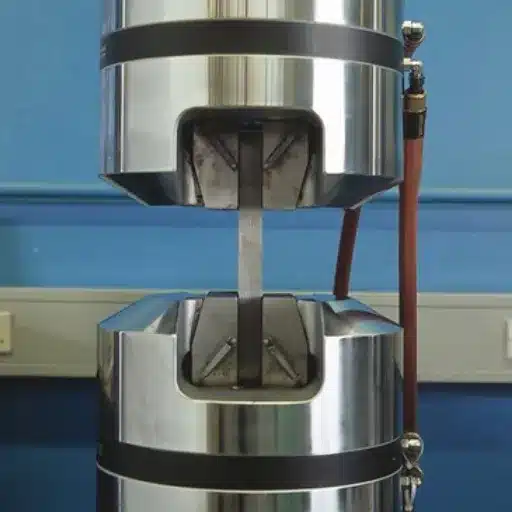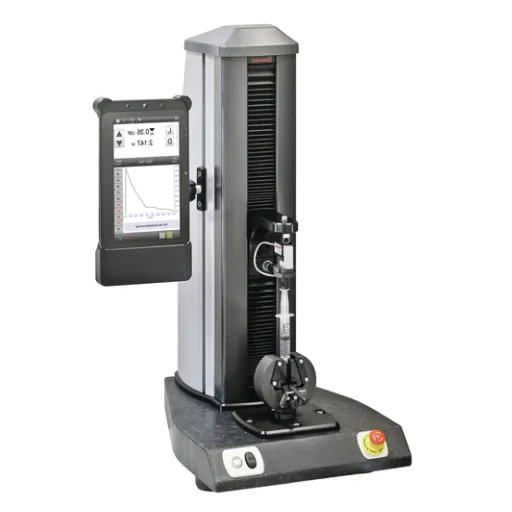Understanding Rubber Testing
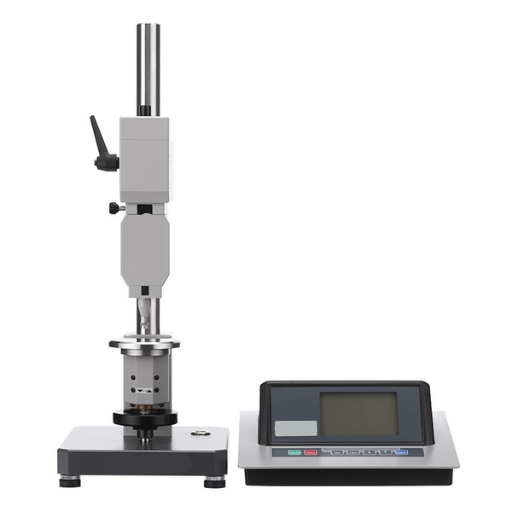
Rubber testing includes a series of tests to determine the physical, mechanical, and chemical properties of rubber materials. Such tests ensure whether or not the material possesses the necessary properties required for performance, durability, and safety with respect to its intended use. Tests such as tensile strength, hardness, elasticity, and compression are commonplace in the industry, as is the capability of aging resistance of these materials. These examinations are primarily important in quality control systems, thus validating material specifications and aiding in the improvement of product design.
The Importance of Rubber Testing in Various Industries
Rubber testing is crucial for many industries like automotive, aerospace, healthcare, and construction because these materials have to satisfy rigorous performance criteria. In the automotive industry, rubber testing ensures components such as tires and seals can stand extreme conditions and wear. In aerospace applications, testing is highly stringent to maintain safety and durability in high-stress environments. In healthcare, rubber materials for gloves and medical devices must meet rigid standards concerning elasticity, barrier effectiveness, and biocompatibility. In construction, rubber testing checks materials used for seals and vibration dampers for durability and stability. By defining material properties, industries reduce the incidences of failures and increase product reliability, safety, and regulatory compliance.
Key Applications of Rubber Testing
- Automotive Industry: Testing makes sure that tires, seals, and gaskets can be subjected to life and adapt to situations, an essential factor for vehicle performance and safety.
- Healthcare Industry: Evaluation of gloves, tubing, and other medical-grade rubber products for biocompatibility and pathogen resistance ensures that strict standards have been met.
- Aerospace Industry: There are performance guarantees to rubber materials under seals, insulations, and components under extreme temperatures and pressures.
- Construction Sector: Rubber testing in seals, vibration dampers, and insulation materials ensures structural integrity and prolongs the life expectancy of buildings and infrastructures.
- Consumer Goods Manufacturing: Testing of rubber used in the manufacture of products such as shoes, sports equipment, and household items assures quality, durability, and compliance with safety regulations.
Common Standards and Regulations
Rubber testing complies with international standards giving consistency, accuracy, and safety in a multitude of applications. Important regulatory frameworks include:
- ASTM International: Reference is made in rubber testing to ASTM standards such as ASTM D412 for tensile strength and elongation and ASTM D2240 for hardness testing to accurately define the measurement procedure and the properties of the material.
- ISO Standards: The International Organization for Standardization (ISO) provides the global benchmark in rubber tests, such as ISO 37 for tensile stressing-strain properties and ISO 1817 for oil resistance.
- REACH (Registration, Evaluation, Authorization and Restriction of Chemicals) and RoHS (Restriction of Hazardous Substances): These EU regulations ensure that rubber products fit the environmental and chemical safety requirements, least harmful substances to be allowed and more promotion on sustainability.
- SAE standards (Society of Automotive Engineers): These are relevant to automotive applications and concern the testing of rubber components for fuel resistance, thermal stability, and durability in operational loads.
In other words, these standards are very important to manufacturers in certifying the quality of their products, fulfill the requirements, and create warranties for consumers.
Overview of Rubber Testing Equipment
Rubber testing equipment accounts for a vast array of devices that determine the physical, chemical, and mechanical parameters of rubber materials. Equipment normally includes tensile testing machines for measurements related to strength and elongation; hardness testing, using any of several durometers, for hardness; and dynamic mechanical analysis for viscoelastic properties over a range of temperatures and frequencies. Then, aging ovens and environmental chambers can simulate exposure of rubber samples to heat, ozone, and humidity over extended periods; while an abrasion tester determines wear resistance. Chemical composition and thermal stability can further be studied using FTIR and TGA. Each of these machines plays a part in ensuring that rubber materials comply with the required specification and performance standards.
Types of Rubber Testing Instruments
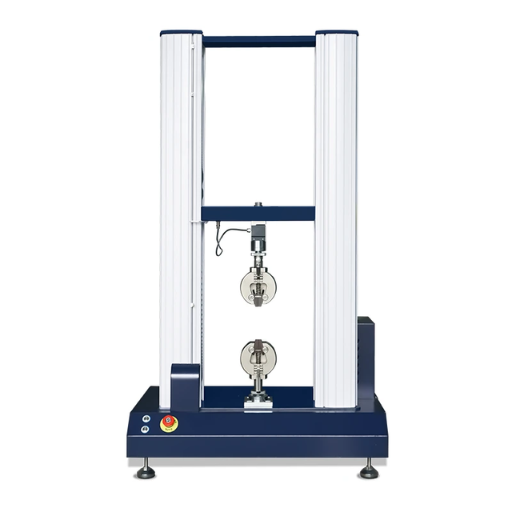
Rubber testing instruments include aging ovens, abrasion testers, FTIR analyzers, TGA, tensile testers, hardness testers, rebound testers, Mooney viscometers, compression set testers, and density measurement devices.
| Instrument | Purpose | Key Parameter |
|---|---|---|
| Aging Oven | Heat/Ozone Testing | Temp., Time |
| Abrasion Tester | Wear Resistance | Load, Cycles |
| FTIR Analyzer | Chemical Analysis | Spectra |
| TGA | Thermal Stability | Temp., Mass |
| Tensile Tester | Strength Testing | Force, Elong. |
| Hardness Tester | Hardness Testing | Durometer Value |
| Rebound Tester | Elasticity Test | Energy Rebound |
| Mooney Viscometer | Viscosity Testing | Torque, Time |
| Compression Set Tester | Deformation Test | Thickness, Time |
| Density Device | Density Analysis | Volume, Mass |
Functions and Features of Testing Equipment
Rubber testing in the equipment is required to ensure quality, durability, and performance of a rubber considered in any application. There can be peculiarities, each device doing an evaluation function of material:
1. FTIR Analyzer
The FTIR (Fourier Transform Infrared) Analyzer acts in chemical analysis for the purpose of identifying the presence of various functional groups and certain molecular structures into classic rubber bodies. It does so by absorption detection of the infrared spectra by the material itself, being hence very important in verifying formulations and contaminations.
2. TGA (Thermogravimetric Analyzer)
It is an instrument which determines thermal stability and composition depending upon mass change of the material with relation to temperature. This is extremely important in the measurement of degradation temperature, filler content, composition properties, etc. under a controlled heating condition.
3. Tensile Tester
Tensile testers essentially determine the strength and elongation properties of rubber materials. By applying a uniaxial force, the machine measures tensile strength, elasticity, and breaking points, values that are required in order to meet parameters of resilience and load-bearing capacity.
These test methods ensure the rubber fits strict functional standards in automotive, aerospace, or manufacturing industries while it provides knowledge of composition, stability, and how the material behaves in varying conditions.
Benefits of Using Advanced Rubber Testing Equipment
They provide accurate data about key properties such as tensile strength, elongation, and stress-strain behavior for the correct determination of how well a material performs.
By catching defects and inconsistencies in the material early on, they allow for production to maintain its high level of standard.
Through automation and strict calibration, these testing systems reduce the amount of labor and time required to test materials, and hence generate huge savings in industrial applications.
The tools test whether the rubber materials comply with regulatory standards and industry-specific standards such as ASTM and ISO, so they can be deemed safe and reliable.
Advanced testing equipment turns out analytical data of great detail, which can aid in decision-making and, consequently, can help improve product development cycles.
Specific Rubber Testing Methods
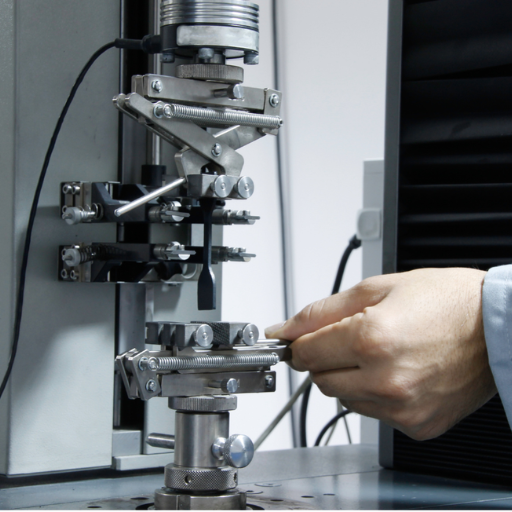
1. Tensile Testing
Determining tensile strength, elongation at break, and modulus constitutes a tensile test. It is essential, therefore, to know the behavior of a material under mechanical stress.
2. Hardness Testing
Hardness testing, generally conducted with the Shore A Durometer, measures resistance to indentation. Naturally important in determining the rubber’s resistance to compressive forces in different applications.
3. Resistance to Abrasion Testing
This test measures the wear resistance of materials as they are subjected to frictional forces. Abrasion resistance is necessary to ascertain the suitability of rubbers for high-wear environments.
4. Compression Set Testing
Such is the measurement of residual deformation of rubber after compression under specified test conditions; this is a measure of the ability of the specimen material to maintain its shape and elasticity under a constant pressure over time.
5. Thermal Aging
Thermal aging simulates aged exposure under heat to understand how a material would perform or remain stable under high temperature. There are applications where extreme temperature changes occur in short time intervals.
6. Ozone Resistance Testing
Ozone resistance tests are conducted to check how rubber materials stand the effect of ozone, ultimately cracking and degrading them. The tests are paramount for outdoor applications where exposure to ozone is common.
Tensile Strength Testing
Essentially, in this tensile strength testing, a material’s capability to resist tensile forces is put under test. It measures certain parameters such as tensile strength, elongation, and modulus of elasticity, which are precious mechanical properties of materials. The general procedure entails grasping the test specimen within the tensile testing machine, applying rigidly controlled tension until it reaches failure. With the test results at hand, an engineer can measure the durability within a material and anticipate its behavior under load, ensuring compliance with applicable industrial standards.
Apart from aerospace, automotive, and construction industries, tensile testing is implemented in virtually every field wherever material application is stressed on performance. Use of this kind of testing provides manufacturers with the capability to improve their product designs, lessen material wastage, and guarantee safety across applications.
Hardness Measurement Techniques
Hardness is the most important procedure applied to check materials’ resistance to deformation, or specifically, permanent indentations occurring on their surface. Common methods include:
Brinell Hardness Test (BHN)
Here, a ball of hardened steel or carbide is pressed onto the surface of the specimen for a given time under a predetermined load. The diameter of the indentation is then measured and taken as a hardness value. It is best suited for coarse-structured materials or those suffering from non-uniformity.
Rockwell Hardness Test (HR)
As the test is rapid and simple to carry out, Rockwell hardness tests are widely used for measuring the depth of penetration of an indenter (steel ball or diamond cone) under a specified load. The Rockwell scale has various sub-scales, adjusted for different materials and conditions.
Vickers Hardness Test (VHN)
This is one microhardness testing procedure that involves a diamond-shaped indenter determining hardness. Extremely precise, it is suitable for very small samples or thin materials; hence, it is generally used in metallurgy and material research.
Each of these methods possesses some benefits, which dictate that one is chosen among them for specific materials, the degree of precision required, and the application itself. Accurate hardness testing serves as one of the primary methods for characterization of the material, operating as a quality check for various processes, and help establishing structural integrity in several industrial sectors.
Aging Resistance Analysis
The evolution of resistance study is a critical process for evaluating the resistance of materials against physical, chemical, or environmental degradation over a period of time. The methods used in this study are the so-called accelerated aging tests whereby materials are subjected to extreme conditions of high temperature, UV radiation, or humidity-factors that would never be faced in anytime-short usage life. Therefore, tensile strength retention, color stability, and elasticity changes are usually measured during aging testing. The resistance to aging results and studies assist manufacturers in predicting the performance level of the material to be sure that the material meets the requirements and standards of the industry, thereby improving the lifecycle of materials used for heavy-duty applications like aerospace, automotive, and construction.
Selecting the Right Rubber Testing Instruments

Choosing the appropriate rubber testing instruments requires a keen understanding of the particular material properties to be tested and the associated standards to be satisfied. For tensile strength and elongation, universal testing machines with the correct gripping device should be used. Abrasion resistance can be evaluated with either rotary or linear abrasion testers, while hardness is usually measured by durometers with scales relevant to the material under test, for example, Shore A or Shore D. When aging and weathering come into play, environmental chambers equipped with accurate temperature, UV, and humidity controls that reproduce operational conditions become necessary. The choice of instruments should favor accuracy, repeatability, and standards observance, such as those of ASTM or ISO, to obtain results that are dependable irrespective of application.
Factors to Consider When Choosing Rubber Testing Equipment
- Material Compatibility: Since there are many varieties of rubber, testing method/instrument pairing would depend on the composition.
- Testing Standards Compliance: Equipment to be chosen, depending on testing, should confirm to the particular industries standards like ASTM D412 for tensile testing or ISO 7619 for hardness so as to obtain standard results.
- Precision and Accuracy: The instrument should yield data that can be relied upon and reproduced in repeated tests with the highest level of uncertainties and repeatabilities given; other priorities are given to any object that does not meet this criterion.
- Environmental Simulation Capabilities: The equipment should test under climatic variability, temperature, humidity, and UV light parameters according to the specification or aging process if such exposure exists.
- Ease of Calibration and Maintenance: Choose testing equipment with relatively simple calibration procedures and little maintenance required to allow for its long-term performance and minimal downtime.
Material Types and Their Testing Requirements
1. Metals
Metals are subjected to intensive testing to evaluate tensile strength, hardness, fatigue resistance, and corrosion resistance. Furthermore, different tests are carried out, including tensile testing, Charpy impact testing, and salt spray testing, according to ASTM or ISO standards. The tests simulate stresses in operations to ensure that the test object is durable enough to bear those stresses under service conditions.
2. Polymers and Plastics
Thermal analysis, tests for chemical resistance of polymers and plastics, and mechanical tests-such as flexural and tensile tests-come under polymer testing. Environmental cracking tests determine degradation mechanisms, while DSC and TGA analyses investigate thermal behavior. It is sometimes necessary to test surface and adhesion properties to ensure they serve application requirements.
3. Ceramics and Glass
Ceramics and glasses are tested for compressive strength, thermal stability, and fracture resistance. These tests include, among others, three-point bending for flexural strength testing and thermal shock tests to ability resist rapid temperature changes. The tests serve to evaluate whether a material adheres to the stringent requirements of such industries as aerospace, and electronics.
4. For composites
Depending upon the interlaminar shear strength, impact resistance, and the fatigue performance that needs to be studied, specific tests can be applied to a composite. To be able to detect various internal flaws, non-destructive testing techniques like ultrasonic and X-ray methods are used. These tests are critical for aerospace, automotive, and structural engineering levels.
5. Elastomer Properties
During the consideration of the behavior of tensile strength, compression set, abrasion resistance, and aging resistance of elastomers, one may also consider dynamic mechanical analysis (DMA) to characterize the flow behavior. UV and ozone testing are used to estimate environmental degradation, thus ensuring product consistency when used in demanding applications.
Industry-Specific Testing Standards
Rubber testing equipment has to adhere to stringent and application-specific standards that assure reliability, safety, and compliance pertaining to various applications. Standards vary from industry to industry but are often established by internationally recognized bodies such as ASTM International, ISO, or by regional regulatory bodies. ASTM D412, for instance, is commonly accepted to determine the tensile properties of vulcanized rubber, whereas ASTM D2240 is for hardness determination by durometers. In the same manner, ISO 37 details specifications for tensile stress and elongation testing of rubber.
In addition, rubber testing equipment needs to allow for special types of tests like fuel and oil resistance, as per ISO 1817, in sectors such as automotive and aerospace, and also fatigue endurance tests for components under dynamic loading. These standards ensure that materials used in critical components can withstand operational stresses and environments. Such detailed testing allow the manufacturers to meet stringent benchmarks for performance and regulatory requirements, thereby greatly reducing failures in mission-critical applications.
Emerging Trends in Rubber Testing Technology
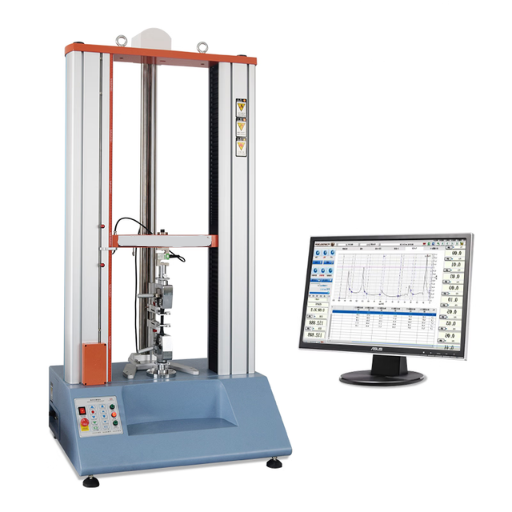
Advances in Instrumentation and Automation
Digital sensors and automated controls for greater precision and repeatability
Sustainability and Green Testing
Non-destructive methods and environmentally friendly procedures
AI and Machine Learning
Predictive modeling and advanced data analysis capabilities
Customized Solutions
Industry-specific testing setups for specialized applications
1. Advances in Instrumentation and Automation
One major trend in rubber testing technology is the arrival of advanced instruments and automation. Modernly designed testing equipment with digital sensors acts with far greater precision than before. The automated controls allow measurements to be taken with little human intervention, increasing repeatability, while measurements without automation may differ slightly based on various factors, including human error. Such systems can also fast-track data acquisition and processing, thus expediting complicated testing.
2. Sustainability and Green Testing Methods
Sustainability is encouraging the use of environmentally friendly testing methods. These include developments in non-destructive testing methods that keep material integrity intact while delivering good test results. The employment of environmentally friendly solvents with testing procedures that create minimal waste fits into the bigger picture of environmental goals.
3. Interpretations of Data through AI and ML
The use of AI and machine learning is revolutionizing data analysis in rubber testing. These technologies help in predictive modeling, anomaly detection, and trend analysis, allowing proactive decision-making for optimizing material performance.
4. Customized Testing Solutions
Growing demand exists for test solutions customized for specific industries and applications. In response, custom setups today address the unique needs of a certain project, and hence test their materials under extreme environmental conditions or niche compositions. This ensures comprehensive validation for specialized use cases.
Automation in Rubber Testing
Automation has undoubtedly transformed rubber testing in terms of speed, accuracy, and reliability in the analysis of materials. Now, any top-grade modern system of automation would feature inbuilt advanced robotics superseding the defies of precision instruments towards carrying out tensile strength tests, hardness tests, and aging simulation processes with barely any human assistance. By doing so, these automated systems keep operator errors to a minimum; thus, they assure repeatability and maximum throughput. Alongside, an automated data management platform is an added advantage wherein real-time monitoring with data aggregation and reporting occurs smoothly, thereby allowing the laboratory to meet the bruising quality standards and earlier their turnaround time. Attempts in the forefront are being made to augment these processes with machine learning algorithms, which optimally analyze patterns emerging from data sets and improve predictive maintenance processes for the testing equipment.
AI-Driven Data Analysis for Enhanced Accuracy
Driven by artificial intelligence, data analysis employs machine learning algorithms and major datasets to produce precise and actionable insights relevant to a laboratory’s unique needs. By automating the recognition of complex patterns hidden within the data, AI eliminates human errors, thus enabling laboratories to confidently maximize prediction and diagnosis accuracy. More advanced systems use natural language processing and deep learning in unison to explore unstructured data along with structured datasets from all information sources, thereby ensuring the highest degree of utility is derived from all information available.
In the best analytical techniques, from anomaly detection to trend forecasting, changes happen through constant reinforcement learning. Cloud-based AI solutions handle huge datasets, providing scalable processing power alongside seamless real-time collaboration between teams. These tools will ensure compliance with the regulatory standards and provide consistent outputs with a good documentation trail. Ultimately, AI-driven tools empower laboratories to optimize workflow efficiency while retaining accuracy and further fortifying their place in a generically data-oriented industry.
Eco-Friendly Testing Solutions
Eco-friendly testing solutions in the field of rubber testing strive to minimize the hazards imposed upon the environment while ensuring accuracy and reliability. Hence, researchers recommend using sustainable materials for testing equipment and designing them in such a way as to consume the lowest possible level of energy. Non-destructive testing technologies allow the examination of rubber materials without causing any waste. Besides, these systems allow for recycling through green ways such as closed-loop control for production monitoring and reduced utilization of chemicals. This development accords with the global initiative to sustainability, so industries will be able to adhere to regulations and go green without compromising on the quality and performance of their products and processes.
Reference Sources
-
Qualitest Rubber & Elastomer Testing Equipment – Offers a range of testing instruments like durometers, UTM, and Mooney viscometers for precise lab results.
-
TA Instruments – Rubber Testing Instruments – Provides details on rheometers, curemeters, and viscometers used for optimizing production and end-use properties.
-
MonTech Rubber Testing Instruments – Features over 70 instruments and software solutions for innovative rubber testing.
-
ACE Laboratories – Rubber Testing Instruments & Equipment – Highlights world-class rubber testing equipment for accurate and reliable results.





